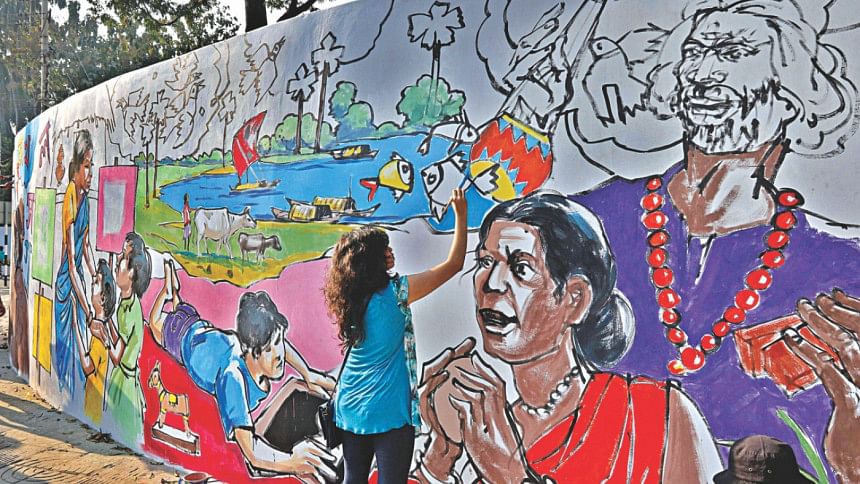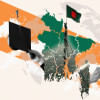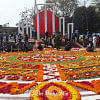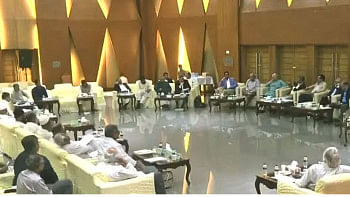Education in Mother Language: 40% population denied globally

Though children should be taught in a language they speak or understand, as much as 40 percent of the global population does not have access to that kind of education.
The challenges are most prevalent in regions -- such as sub-Saharan Africa and Asia and the Pacific -- where linguistic diversity is the greatest, reveals a policy paper of the Unesco's Global Education Monitoring Report.
If children are taught in a language other than their own, it has a negative effect on learning, according to the paper styled "If you don't understand, how can you learn?" released on Friday, ahead of International Mother Language Day being observed worldwide today.
In Bangladesh, there are around 30 lakh people -- mainly indigenous -- whose mother tongues are not Bangla. Of them, some five lakh are children who have almost no access to education in their mother language, linguist Shourav Sikdar told The Daily Star.
Although the National Education Policy-2010 calls for steps to ensure education of the indigenous people in their mother tongues, the plan had not yet been implemented mainly due to bureaucratic tangles, said the professor of linguistics at Dhaka University.
Citing a 2012 survey, Mong Shanoo Chowdhury, a retired government college teacher in Rangamati, said the dropout rate among the indigenous children in the three hill districts was 65 percent.
"The main reason behind such a high dropout rate is they cannot pursue education in their mother language," he observed.
Prof Shourav, also a member of the government's Mother Tongue-Based Multilingual Education programme, said though some non-government organisations were working to provide education to indigenous children in their mother language, "it is very insufficient".
After formulating the new education policy, the government decided to print primary textbooks in five ethnic languages initially and deliver those to the indigenous children concerned by the beginning of 2014, he said.
"But it has not been done even in 2016."
Primary and Mass Education Minister Mostafizur Rahman could not be reached on his phone for comments despite several attempts.
Pursuing education in a language that is not spoken outside the classroom frequently holds back a child's learning, especially for those living in poverty, says the Unesco policy paper.
For instance, Farsi is the official language of instruction in Iran.
Around 20 percent of the fourth graders there taking the test in Farsi reported speaking a different language at home.
"Of these, 80 percent reached the basics in reading compared with over 95 percent of Farsi speakers," the report states.
In multi-ethnic societies, imposing a dominant language through a school system has frequently been a source of grievance linked to wider issues of social and cultural inequality, the Unesco paper finds.
For example, the post-independence government in Pakistan adopted Urdu as the national langue and the language of instruction in schools, which became a source of alienation in a country that was home to six major linguistic groups and 58 smaller ones.
"The failure to recognise Bengali, spoken by the vast majority of the population in [the then] East Pakistan, was one of the major sources of conflict within the new country, leading to the student riots [language movement] in 1952," it says.
In Pakistan, the continued use of Urdu as the language of instruction in government schools, even though it is spoken at home by less than eight percent of the population, has also contributed to political tensions, it adds.
The Unesco report recommended that at least six years of mother tongue-based education should be provided in ethnically diverse communities to ensure that those speaking a language different from the medium of instruction do not fall behind.
Bilingual or multilingual education programmes should be offered to ease the transition to the teaching of the official languages, it suggests.
To fully support the implementation of mother tongue-based bilingual/multilingual education programmes, teachers should be trained to teach in more than one language, it continues.
Policymakers need to focus on hiring and training teachers from linguistic and ethnic minorities to serve in the schools of their own communities, the paper states.

 For all latest news, follow The Daily Star's Google News channel.
For all latest news, follow The Daily Star's Google News channel. 








Comments